 |
by staff on (#50KV7)
Micron has acquired FWDNXT, a machine learning software and hardware startup that spun out of Purdue. Micron is integrating FWDNXT’s artificial intelligence hardware and software technology with its advanced memory to explore deep learning solutions for data analytics, particularly in IoT and edge computing. "Purdue provided the entrepreneurial resources to help me achieve my vision of taking our work on machine learning and deep learning technology to a much wider audience where we can have a bigger impact,†said Eugenio Culurciello, Micron fellow and chief machine learning architect.The post Micron Acquires Machine Learning Startup from Purdue appeared first on insideHPC.
|
 Inside HPC & AI News | High-Performance Computing & Artificial Intelligence
Inside HPC & AI News | High-Performance Computing & Artificial Intelligence
| Link | https://insidehpc.com/ |
| Feed | http://insidehpc.com/feed/ |
| Updated | 2025-11-07 04:15 |
 |
by staff on (#50KV9)
By taking advantage of the infinite geometric space of a particular quantum system made up of bosons, the researchers, led by Dr Arne Grimsmo from the University of Sydney, have developed quantum error correction codes that should reduce the number of physical quantum switches, or qubits, required to scale up these machines to a useful size. "The beauty of these codes is they are ‘platform agnostic’ and can be developed to work with a wide range of quantum hardware systems,†Dr Grimsmo said.The post New Paper: A novel error-correction scheme for quantum computers appeared first on insideHPC.
|
 |
by Rich Brueckner on (#50KVB)
"A research team from Rice University utilized three supercomputers (TACC’s Stampede 2, Wrangler, and Pittsburg Supercomputing Center’s Bridges system) to see if data on heat waves and cold spells could be predicted by analysis of atmospheric circulation and prior surface temperature. The results of these tests indicated that this deep learning approach is more accurate at predicting extreme weather."The post Podcast: Applying Deep Learning to Extreme Weather appeared first on insideHPC.
|
 |
by Richard Friedman on (#50KJX)
Intel Parallel Studio XE is a complete software development suite that includes highly optimized compilers and math and data analytics libraries, along with comprehensive tools for performance analysis, application debugging, and parallel processing. It’s available as a download for Windows, Linux, and MacOS. "With this release, the focus is on making it easier for HPC and AI developers to deliver fast and reliable parallel code for the most demanding applications."The post Latest Release of Intel Parallel Studio XE Delivers New Features to Boost HPC and AI Performance appeared first on insideHPC.
|
 |
by staff on (#50KDW)
Today Schneider Electric introduced its first-ever first rack mounted data center cooling solution. The Uniflair Rack Mounted Cooling 3.5kW, DX solution addresses the escalating demand for rack-based cooling for micro data centres and edge computing where space can be at a premium. "Simply put, our new vendor-neutral, rack mounted cooling solution is right-sized for edge micro data centers and provides the right answer for cooling today’s critical edge technology,†said Maurizio Frizziero, Director of Cooling, Schneider Electric. “It offers more cooling in less space and simplifies management and maintenance, making it ideal for industries like retail, finance, health care, light manufacturing, and education.â€The post Schneider Electric Introduces Uniflair Rack Mounted Cooling Solution appeared first on insideHPC.
|
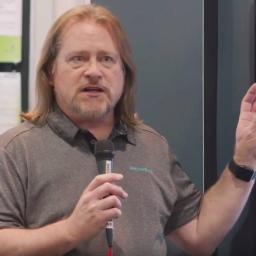 |
by Rich Brueckner on (#50J3E)
Curtis Anderson from Panasas gave this talk at SC19. "Panasas PanFS, the operating environment for the Panasas ActiveStor architecture, delivers superior performance for today’s demanding workloads. A scale-out object back-end supports limitless scaling, while optimal data placement and an internally balanced architecture boost efficiency. All with frustration-free deployment, operation, and maintenance."The post Adding Ultra Low Latency to PanFS for AI and HPC appeared first on insideHPC.
|
 |
by Rich Brueckner on (#50J3G)
The University of California, Riverside, has won a University of California Multicampus-National Lab Collaborative Research and Training Award of $3.75 million that will allow the campus to focus on enabling scalable quantum computing. "The goal of this collaborative project is to establish a novel platform for quantum computing that is truly scalable up to many qubits,†said Boerge Hemmerling, an assistant professor of physics and astronomy at UC Riverside and the lead principal investigator of the three-year project. “Current quantum computing technology is far away from experimentally controlling the large number of qubits required for fault-tolerant computing. This stands in large contrast to what has been achieved in conventional computer chips in classical computing.â€The post UC Riverside to help develop scalable quantum computers appeared first on insideHPC.
|
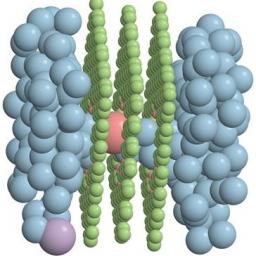 |
by staff on (#50J3J)
In this TACC podcat, host Jorge Salazar discusses ion transport research with Amir Haji-Akbari, an assistant professor of chemical and environmental engineering at Yale University. "Scientists are using supercomputers to help understand the relatively rare event of salts in water passing through atomically-thin nanoporous membranes. This research could not only help make progress in desalination for fresh water; it has applications in decontaminating the environment, better pharmaceuticals, and more."The post Podcast: Supercomputers Drive Ion Transport Research appeared first on insideHPC.
|
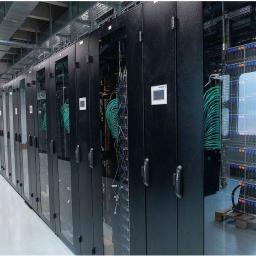 |
by staff on (#50HPW)
NEC has deployed a new supercomputer at the University of Ulm in Germany. With a peak performance of 2 petaflops, the 4.4 million euro JUSTUS 2 system will enable complex simulations in chemistry and quantum physics. "JUSTUS 2 enables highly complex computer simulations at the molecular and atomic level, for example from chemistry and quantum science, as well as complex data analysis. And this with significantly higher energy efficiency than its predecessor,†said Ulrich Steinbach.The post JUSTUS 2 Supercomputer from NEC Deployed at University of Ulm appeared first on insideHPC.
|
 |
by Rich Brueckner on (#50GC5)
Today the NEC X innovation accelerator announced a new reference design and services offering with VACO that enables enterprises to more confidently comply with personally identifiable information (PII) data governance regulations such as GDPR. Based on the NEC X’s SX-Aurora TSUBASA AI platform, the reference design uses vector processing to provide supercomputing performance on a compact PCIe x16 card. This AI platform runs VACO’s proven Cognitive Computing Framework and can be scaled with the exact number of vector engine (VE) cards needed to process large data sets in real time, for use in machine learning (ML) applications such as PII redaction and GDPR compliance for banking, financial services and insurance (BFSI), as well as several other segments.The post NEC X and VACO Partner on AI/ML Solution using Vector Computing appeared first on insideHPC.
|
 |
by staff on (#50GC7)
In this Let's Talk Exascale podcast, Hal Finkel of Argonne National Laboratory describes how community collaboration is driving compiler infrastructure at the LLVM project. "LLVM is important to a wide swath of technology professionals. Contributions shaping its development have come from individuals, academia, DOE and other government entities, and industry, including some of the most prominent tech companies in the world, both inside and outside of the traditional high-performance computing space."The post Podcast: How Community Collaboration Drives Compiler Technology at the LLVM Project appeared first on insideHPC.
|
 |
by Rich Brueckner on (#50GC9)
Today DDN announced that HLRS in Germany has selected DDN's EXAScaler with IME scale-out flash storage system for "Hawk," its new flagship supercomputer system, to support data-intensive workflows that combine big data analysis, deep learning and simulation, empowering scientists and engineers to conduct research on larger and more complex phenomena. "DDN is honoured to collaborate with HLRS to provide computational and storage capabilities that help generate new discoveries, advance scientific understanding and allow scientists and engineers to take on grand challenges that have previously been unreachable or even unimaginable, in order to help us better understand the world around us."The post DDN EXAScaler with IME Accelerates Hawk Supercomputer at HLRS appeared first on insideHPC.
|
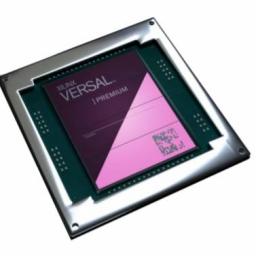 |
by Rich Brueckner on (#50GCB)
Today Xilinx announced Versal Premium, the third series in the Versal ACAP portfolio. The Versal Premium series features highly integrated, networked and power-optimized cores and the industry’s highest bandwidth and compute density on an adaptable platform. Versal Premium is designed for the highest bandwidth networks operating in thermally and spatially constrained environments, as well as for cloud providers who need scalable, adaptable application acceleration.The post Xilinx Announces Versal Premium ACAP for Network and Cloud Acceleration appeared first on insideHPC.
|
 |
by staff on (#50GCD)
In this video from Big Compute 2020, Barry Bolding from AWS shows how high performance computing in the cloud has been enabling innovation -- without infrastructure constraints -- across multiple industries. "Millions of customers—including the fastest-growing startups, largest enterprises, and leading government agencies—trust AWS to power their infrastructure, become more agile, and lower costs."The post HPC in the Cloud: Innovating Without Infrastructure Constraints appeared first on insideHPC.
|
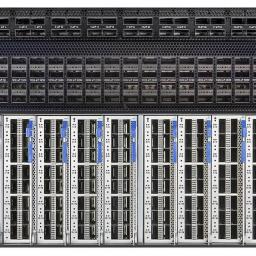 |
by Rich Brueckner on (#50F4C)
Today Mellanox announced it has commenced shipments of SN4000 Ethernet switches. The SN4000 family is powered by Mellanox Spectrum-3 - the world’s best performing, most scalable, and most flexible 12.8 Tbps Ethernet switch ASIC, which is optimized for Cloud, Ethernet Storage Fabric, and AI interconnect applications. SN4000 platforms come in flexible form-factors supporting a combination of up to 32 ports of 400GbE, 64 ports of 200GbE and 128 ports of 100/50/25/10GbE. The SN4000 platforms complement the 200/400GbE SN3000 leaf switches to form an efficient and high bandwidth leaf/spine network.The post 12.8 Tbps Mellanox Spectrum-3 Ethernet Switches Optimized for Cloud, Storage, and AI appeared first on insideHPC.
|
 |
by Rich Brueckner on (#50EVE)
University of Waterloo students have teamed up with Google to develop software to accelerate machine learning using quantum science. The collaborative effort resulted in the creation of an open-source hybrid quantum-classical machine learning software platform, called TensorFlow Quantum. TensorFlow Quantum integrates Google’s Cirq and TensorFlow and will allow for the rapid prototyping, training, inference, and […]The post TensorFlow Quantum software combines quantum and classical machine learning appeared first on insideHPC.
|
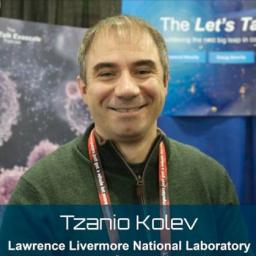 |
by Rich Brueckner on (#50EVG)
In this Let's Talk Exascale podcast, Tzanio Kolev from LLNL describes the work at Center for Efficient Exascale Discretizations (CEED), one of six co-design centers within the Exascale Computing Project. "Discretization methods divide a large simulation into smaller components in preparation for computer analysis. CEED is ECP’s hub for partial differential equation discretizations on unstructured grids, providing user-friendly software, mathematical expertise, community standards, benchmarks, and miniapps as well as coordination between the applications, hardware vendors, and Software Technology (ST) efforts in ECP."The post Podcast: Helping Applications Use Future Architectures with First-Rate Discretization Libraries appeared first on insideHPC.
|
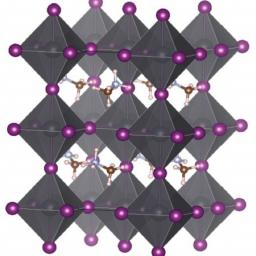 |
by Rich Brueckner on (#50EVJ)
In this special guest feature, Santina Russo from CSCS writes that scientists are using the “Piz Daint†supercomputer at CSCS to investigate a perovskite material for use in solar cells. "Solar cells made out of certain perovskite materials already exceed 22% efficiency in converting solar light to electrical energy under lab conditions, which is more than commercial silicon cells. However, not all perovskite materials exhibit such favorable properties, and the physics behind their photovoltaic performance is not yet fully known. Understanding these processes is important, since this will facilitate the design of new materials with favorable properties in the future."The post Supercomputing Perovskite Solar Cells appeared first on insideHPC.
|
 |
by Rich Brueckner on (#50EK5)
Chin Fang from Zettar gave this talk at the Rice Oil & Gas Conference. "The objective of this talk is to present two on-going projects aiming at improving and ensuring highly efficient bulk transferring or streaming of massive amounts of data over digital connections across any distance. It examines the current state of the art, a few very common misconceptions, the differences among the three major type of data movement solutions, a current initiative attempting to improve the data movement efficiency from the ground up, and another multi-stage project that shows how to conduct long distance large scale data movement at speed and scale internationally."The post Moving Massive Amounts of Data across Any Distance Efficiently appeared first on insideHPC.
|
 |
by staff on (#50DMA)
In this podcast, Brock Taylor from Intel outlines the current portfolio of Intel Select Solutions for HPC: Simulation & Modeling, Simulation & Visualization, Genomic Analytics and HPC & AI Converged Clusters. "These solutions offer quick-to-deploy infrastructure optimized for analytics clusters and HPC applications. Pre-validation reduces complexity and helps make HPC more accessible and easier to maintain."The post Podcast: Intel Select Solutions for HPC appeared first on insideHPC.
|
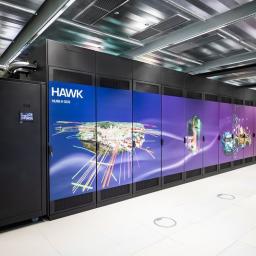 |
by Rich Brueckner on (#50DMC)
In this video, technicians install the new Hawk supercomputer at HLRS in Stuttgart, Germany. "At time of installation, Hawk is among the fastest high-performance computers in the world and the fastest general-purpose machine for industrial production in Europe. In concert with our other platforms for high-performance data analytics and artificial intelligence, Hawk enables HLRS to support new kinds of workflows that combine data generation, simulation, big data analysis, deep learning, and other data science methods."The post Video: HAWK Supercomputer Installation at HLRS appeared first on insideHPC.
|
 |
by Rich Brueckner on (#50CQ0)
Bradley McCredie from AMD gave this talk at the Rice Oil & Gas Conference. "While foundries bravely drive forward to overcome the technical and economic challenges posed by scaling to 5nm and beyond, Moore’s law alone can provide only a fraction of the performance / watt and performance / dollar gains needed to satisfy the demands of today’s high performance computing and artificial intelligence applications. To close the gap, multiple strategies are required. First, new levels of innovation and design efficiency will supplement technology gains to continue to deliver meaningful improvements in SoC performance. Second, heterogenous compute architectures will create x-factor increases of performance efficiency for the most critical applications."The post Video: Next Generation AMD CPU and Accelerator Technologies appeared first on insideHPC.
|
 |
by Rich Brueckner on (#50CQ2)
"William & Mary University in Virginia seeks qualified applicants for the position of Research Computing (RC) Network and Data Specialist to be responsible for day-to-day operations, maintenance and hardware support for all networking and file-systems serving RC systems. Systems include Linux-based clusters, departmental servers, and workstations under the control of RC. Network types include Ethernet, Infiniband, and Fibre Channel. File-systems utilize NFS, SMB/CIFS, and Lustre."The post Job of the Week: Network and Data Specialist at William & Mary appeared first on insideHPC.
|
 |
by Rich Brueckner on (#50BAD)
A team of researchers from three Finnish institutions (CSC, Aalto University, and Abo Akademi University) and their collaborators from Boston University in the USA have for the first time demonstrated how the noise impacts a calculation in a systematic way. By varying the time over which the quantum property of the qubits is changed (from microseconds to milliseconds) and studying different numbers of coupled qubits in a D-Wave device, they were able to confirm a general principle of defect creation (meaning errors in the calculation). "According to this principle, a longer computing time should give a better result, but the researchers found that the noise negatively affects the results more if the time is longer. They explained this behavior by a mathematical model, which will be a useful tool for diagnosing future quantum annealing devices and to find the best ways to operate them."The post Finnish researchers demonstrate how noise impacts quantum computing appeared first on insideHPC.
|
 |
by Rich Brueckner on (#50BAE)
In this video from FOSDEM 2020, John Hanley from ECMWF presents: Speeding up Programs with OpenACC in GCC. Weather forecasts produced by ECMWF and environment services by the Copernicus programme act as a vital input for many downstream simulations and applications. A variety of products, such as ECMWF reanalyses and archived forecasts, are additionally available […]The post Speeding up Programs with OpenACC in GCC appeared first on insideHPC.
|
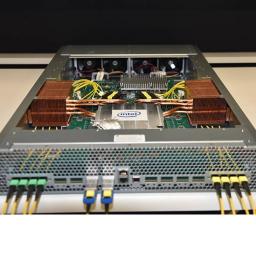 |
by staff on (#50BAG)
Today Intel announced that it successfully integrated its 1.6 Tbps silicon photonics engine with its 12.8 Tbps programmable Ethernet switch. The co-packaged switch optimized for hyperscale data centers brings together the essential technology building blocks from Intel and its Barefoot Networks Division. Our co-packaged optics demonstration is the first step to making optical I/O with silicon photonics a reality," said Hong Hou, Intel corporate vice president and general manager of the Silicon Photonics Products Division. "We share the industry belief that co-packaged optics offers power and density advantages for switches at 25 Tbps and higher, and ultimately is a necessary and enabling technology for bandwidth scalability in future networks. The timing of this demonstration shows the technology is ready to support our customers’ requirements.â€The post Intel Demonstrates Industry-First Co-Packaged Optics Ethernet Switch appeared first on insideHPC.
|
 |
by staff on (#50AXW)
In this podcast, the Radio Free HPC team looks at the Cray Slingshot interconnect that will power all three of the first Exascale supercomputers in the US. "At the heart of this new interconnect is their innovative 64 port switch that provides a maximum of 200 Gb/s per port and can support Cray’s enhanced Ethernet along with standard Ethernet message passing. It also has advanced congestion control and quality of service modes that ensure that each job gets their right amount of bandwidth."The post Podcast: Slingshotting to Exascale appeared first on insideHPC.
|
 |
by staff on (#50BAJ)
Researchers at ORNL used the Summit supercomputer to identify 77 small-molecule drug compounds that might warrant further study in the fight against the SARS-CoV-2 coronavirus, which is responsible for the COVID-19 disease outbreak. "The two researchers performed simulations on Summit of more than 8,000 compounds to screen for those that are most likely to bind to the main “spike†protein of the coronavirus, rendering it unable to infect host cells."The post ORNL Enlists #1 Summit Supercomputer to Combat Coronavirus appeared first on insideHPC.
|
 |
by Rich Brueckner on (#509MW)
Prof Simon See from the NVIDIA AI Technology Center has received the Singapore HPC Pioneer & Achievement Award from SupercomputingAsia conference series. Dr. See was recognized for his efforts in setting up the first NVAITC in Singapore and driving HPC in AI locally and globally. "The SCA Awards are an opportunity for the HPC community to recognize individuals who have contributed significantly in one way or another or who have been instrumental in the development of the HPC ecosystem in Singapore and regionally."The post Prof Simon See receives Singapore HPC Pioneer & Achievement Award appeared first on insideHPC.
|
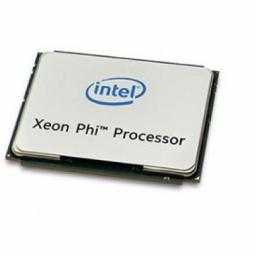 |
by Rich Brueckner on (#509MY)
A new paper by Dr Sparsh Mittal surveys techniques for evaluating and optimizing Intel's Xeon Phi. Now accepted in Concurrency and Computation 2020, the survey reviews nearly 100 papers. "Intel Xeon Phi combines the parallel processing power of a many-core accelerator with the programming ease of CPUs. Phi has powered many supercomputers, e.g., in June 2018 list of Top500 supercomputers, 19 supercomputers used Phi as the main processing unit. This paper surveys works that study the architecture of Phi and use it as an accelerator for various applications. It critically examines the performance bottlenecks and optimization strategies for Phi. For example, the main motivation and justification for development of Phi was ease of programming."The post New Paper Surveys Optimization Techniques for Intel Xeon Phi appeared first on insideHPC.
|
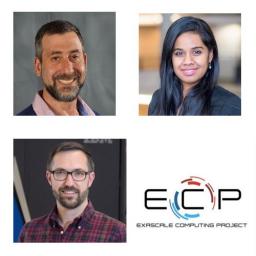 |
by staff on (#509MZ)
The US Department of Energy’s Exascale Computing Project has announced three leadership staff changes within the Hardware and Integration (HI) group. "Over the past several months, ECP’s HI team has been adapting its organizational structure and key personnel to prepare for the next phase of exascale hardware and software integration."The post New Leaders Join Exascale Computing Project appeared first on insideHPC.
|
 |
by staff on (#509N1)
In this Chip Chat podcast, Intel Fellow Frank Hady explores the relationship of memory and storage to compute, and outlines how Intel is helping accelerate performance throughout information ecosystems and re-invent the memory storage paradigm in systems. "Since its introduction, 3Dx Point memory, the basis for Intel Optane DC Persistent Memory, has helped mitigate one of the biggest bottlenecks to performance."The post Podcast: Reinventing the Memory-Storage Paradigm appeared first on insideHPC.
|
 |
by staff on (#509N3)
This video from Coreteks provides an overview of the Fujitsu A64FX processor that will power the pending Fugaku supercomputer in Japan. "The A64FX is a many core CPU like AMD Epyc or Intel's Xeons, but at the same time it behaves like a GPU in some workloads matching NVIDIA's most powerful offering, Volta. Today we'll look at how this chip operates, why it could challenge Intel, AMD, NVIDIA and cloud and hyperscalers and what it could mean for us PC enthusiasts."The post Video: Overview of the Fujitsu A64fx processor appeared first on insideHPC.
|
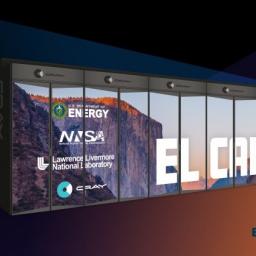 |
by Rich Brueckner on (#5089D)
Today HPE announced that it will deliver the world’s fastest exascale-class supercomputer for NNSA at a record-breaking speed of 2 exaflops - 10X faster than today’s most powerful supercomputer. 'El Capitan is expected to be delivered in early 2023 and will be managed and hosted by LLNL for use by the three NNSA national laboratories: LLNL, Sandia, and Los Alamos. The system will enable advanced simulation and modeling to support the U.S. nuclear stockpile and ensure its reliability and security."The post AMD to Power 2 Exaflop El Capitan Supercomputer from HPE appeared first on insideHPC.
|
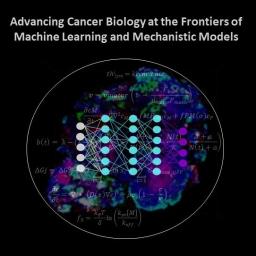 |
Applications Open for “Advancing Cancer Biology at the Frontiers of Machine Learning” Innovation Lab
by staff on (#507ZQ)
The National Cancer Institute (NCI) in collaboration with Carnegie Mellon University, and Knowinnovation are convening experts in cancer systems biology, mathematical modeling and machine learning to come together, share ideas, form new collaborative teams, and propose and refine interdisciplinary pilot projects. The Innovation Lab “Advancing Cancer Biology at the Frontiers of Machine Learning and Mechanistic Modeling†will be held on June 1-5, 2020.The post Applications Open for “Advancing Cancer Biology at the Frontiers of Machine Learning†Innovation Lab appeared first on insideHPC.
|
 |
by staff on (#507ZS)
Today ISC 2020 announced that Mattias Troyer and Thomas Sterling will be keynote speakers at the event. During his keynote, Troyer will describe the hardware and software architectures of quantum computers systems and discuss how they differ from classical HPC systems. Sterling’s closing address this year promises to be more wide-ranging than his usual retrospective, as he traces the intersection of long-term trends involving the diminishing prospects of Moore’s Law, the lengthening lifetimes systems, the consolidation of the HPC market, and the ascent of machine learning."The post ISC 2020 Keynotes Focus on Shaping Tomorrow appeared first on insideHPC.
|
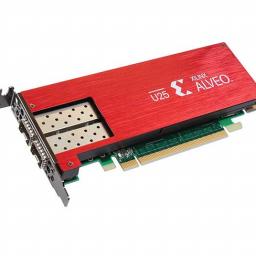 |
by staff on (#507ZT)
Today Xilinx announced the industry’s first SmartNIC platform delivering true convergence of network, storage and compute acceleration functions on a single device. "The U25 combines a highly optimized SmartNIC platform with a powerful and flexible FPGA-based engine that supports full programmability and turnkey accelerated applications. The U25 delivers a comprehensive SmartNIC platform to address the industry’s most challenging demands and workloads such as SDN, virtual switching, NFV, NVMe-oF, electronic trading, AI inference, video transcoding, and data analytics."The post Xilinx SmartNIC Accelerates Network, Storage, and Compute on Single Device appeared first on insideHPC.
|
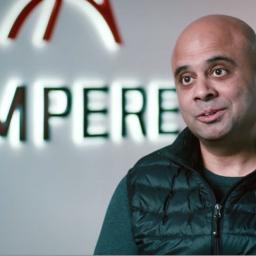 |
by staff on (#507ZW)
Today Ampere announced that it has begun shipping the Ampere Altra processor, the industry’s first 80-core server CPU and the first cloud native CPU for modern cloud and edge computing data centers. Ampere Altra is the company’s next generation cloud-focused product, and first in a new class of CPUs rolling out on an annual basis from Ampere’s roadmap, that will provide predictable high performance, secure isolation through single-threaded cores, scalability across the entire platform, and new levels of power efficiency.The post Video: Ampere Altra is Industry’s First 80-Core Server Processor appeared first on insideHPC.
|
 |
by Rich Brueckner on (#507GC)
When it comes to successfully identifying the likely success of companies, and steering an effective investment strategy, there is one organization that appears to be well ahead of the pack. "The company is WR Hambrecht and the person guiding their analysis and decision-making process utilizing a proprietary software system he developed more than a decade ago is Thomas Thurston, Partner and Chief Technology Officer of WR Hambrecht Ventures."The post Shedding New Light on Intelligent Investment Strategies for HPC appeared first on insideHPC.
|
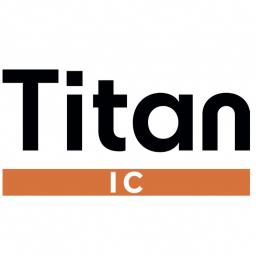 |
by Rich Brueckner on (#50685)
Today Mellanox announced that it has reached a definitive agreement to acquire privately held Titan IC, the leading developer of network intelligence (NI) and security technology to accelerate search and big data analytics across a broad range of applications in data centers worldwide. The acquisition will further strengthen Mellanox’s network intelligence capabilities delivered through the […]The post Mellanox to Acquire Titan IC for Security and Data Analytics appeared first on insideHPC.
|
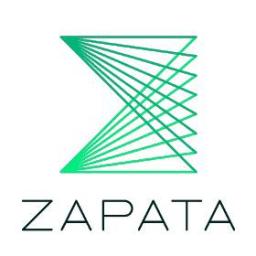 |
by staff on (#50687)
Today quantum startup Zapata Computing announced a strategic investment from Honeywell Ventures, the venture capital arm of Honeywell. The investment will fuel continued enhancements to Zapata Computing’s platform and increase its ability to support its global customers. Prior to today’s investment, Zapata Computing has been developing quantum solutions in a technical collaboration with Honeywell, which announced plans today to be releasing a powerful trapped-ion quantum computer within the next three months.The post Honeywell Ventures paves way for Quantum System from Zapata Computing appeared first on insideHPC.
|
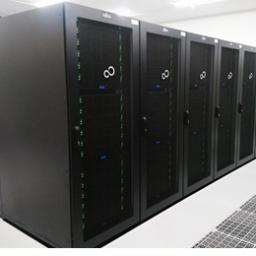 |
by staff on (#50689)
Today Fujitsu announced the deployment of a new supercomputer system for the Meteorological Research Institute of the Japan Meteorological Agency. The new system consists of approximately 900 nodes including the latest x86 servers Fujitsu Server PRIMERGY CX2550 M5. With high-speed Intel Omni-Path interconnect, the system has a peak performance of 2.81 petaflops. "With the new supercomputer system, the Meteorological Research Institute plans to further advance research and development in areas such as the prediction and analysis of earthquakes, tsunamis, and volcanoes."The post Intel Powers Fujitsu Supercomputer at Japan’s Meteorological Research Institute appeared first on insideHPC.
|
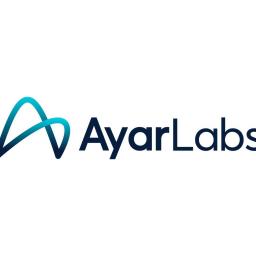 |
by Rich Brueckner on (#5068B)
Optical interconnect startup Ayar Labs has received a strategic investment from Lockheed Martin Ventures. The funds will be used to accelerate the commercialization of Ayar Labs’ patented monolithic in-package optical I/O (MIPO) solution for applications that require high bandwidth, low latency and power efficient short reach interconnects. "We are excited to welcome Lockheed Martin Ventures as a strategic investor,†said Charles Wuischpard, CEO of Ayar Labs. “Working with key system integrators like Lockheed Martin, who really understand the value of our solution and how to design it into future complex systems, is incredibly important. In that sense, we view this relationship as more than funding alone, but as an important long-term working relationship as well.â€The post Lockheed Martin makes Strategic Investment in Ayar Labs appeared first on insideHPC.
|
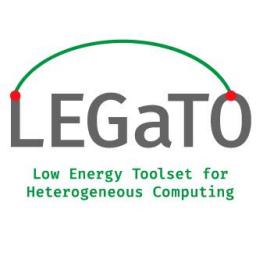 |
by Rich Brueckner on (#5068D)
In this special guest feature from Scientific Computing World, Robert Roe writes that European researchers have developed a framework to boost the energy efficiency of CPU, GPU and FPGA resources. "Legato (Low Energy Toolset for Heterogeneous Computing) is one such project with the lofty aims of developing a programming framework to support heterogeneous systems of CPU, GPU and FPGA resources that can offload specific tasks to different acceleration technologies through its own runtime system."The post Stepping up Efficiency for Exascale with FPGAs at the LEGaTO Project appeared first on insideHPC.
|
 |
by Rich Brueckner on (#504J4)
Due to the coronavirus, today NVIDIA announced that GTC 2020 is turning into a digital conference rather than a live event. "As the coronavirus situation is not improving, we’re turning GTC San Jose into a digital conference rather than a live event. Jensen will still give a keynote. We will still share our announcements. And we’ll work to ensure our speakers can share their talks. But we’ll do this all online. We will provide updates here soon about when you can tune in, and will be in touch with those who purchased a conference pass about a full refund."The post NVIDIA Cancels GTC 2020 Live Event due to Coronavirus appeared first on insideHPC.
|
 |
by staff on (#50488)
In this special guest feature, Gilad Shainer from Mellanox Technologies writes that the new GPCNeT benchmark is actually a measure of relative performance under load rather than a measure of absolute performance. "When it comes to evaluating high-performance computing systems or interconnects, there are much better benchmarks available for use. Moreover, the ability to benchmark real workloads is obviously a better approach for determining system or interconnect performance and capabilities. The drawbacks of GPCNeT benchmarks can be much more than its benefits."The post GPCNeT or GPCNoT? appeared first on insideHPC.
|
 |
by staff on (#504J5)
In this video, academics and industry experts weigh in on the potential of oneAPI, the new, unified software programming model for CPU, GPU, AI, and FPGA accelerators that delivers high compute performance for emerging specialized workloads across diverse compute architectures.The post Video: How oneAPI Is Revolutionizing Programming appeared first on insideHPC.
|
 |
by Rich Brueckner on (#504J7)
Rice researchers created a cost-saving alternative to GPU, an algorithm called "sub-linear deep learning engine" (SLIDE) that uses general purpose central processing units (CPUs) without specialized acceleration hardware. "Our tests show that SLIDE is the first smart algorithmic implementation of deep learning on CPU that can outperform GPU hardware acceleration on industry-scale recommendation datasets with large fully connected architectures."The post SLIDE algorithm for training deep neural nets faster on CPUs than GPUs appeared first on insideHPC.
|
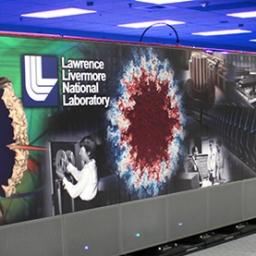 |
by Rich Brueckner on (#50484)
Lawrence Livermore National Laboratory (LLNL) is now home to the world’s largest Spectra TFinity system, following a complete replacement of the tape library hardware that supports Livermore’s data archives. Housed behind Sierra—the world’s 2nd fastest supercomputer—the new tape library helps the Laboratory meet some of the most complex data archiving demands in the world and offers the speed, agility, and capacity required to take LLNL into the exascale eraThe post World’s Largest Spectra TFinity Tape Library installed at LLNL appeared first on insideHPC.
|
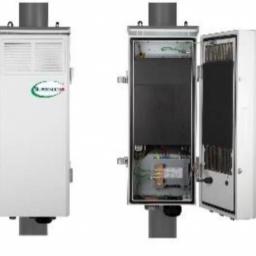 |
by Rich Brueckner on (#50486)
Today Supermicro announced first-to-market IP65 enclosure-based servers for 5G RAN, AI inferencing, and other edge-focused applications based on Intel Xeon D and 2nd Gen Intel Xeon processors and broad configuration options. "Based on Supermicro’s Building Block Solutions, these 5G systems can be configured with a variety of processor and memory combinations so that customers can tailor their solutions to push data center remote management to the Edge. Supermicro has extensive experience with popular virtualization and container software such as Kubernetes, to efficiently facilitate these interactions, and has multiple servers certified NGC-Ready for Edge to extend AI capabilities across public and private networks."The post Supermicro announces Pole-mounted Ruggedized Servers for AI on the Edge appeared first on insideHPC.
|